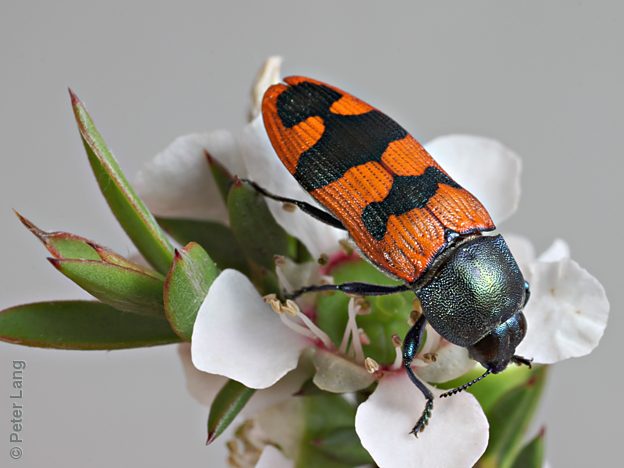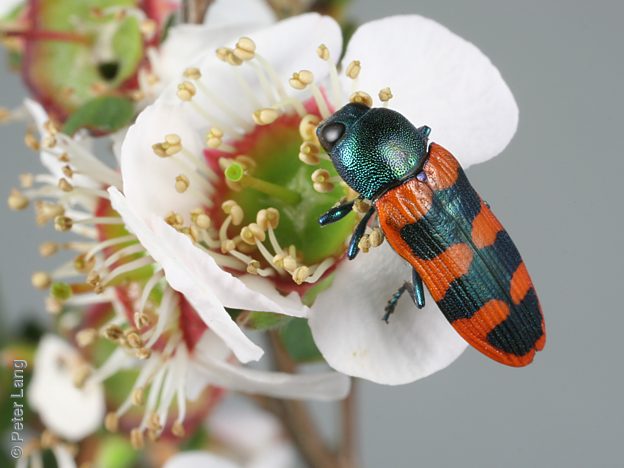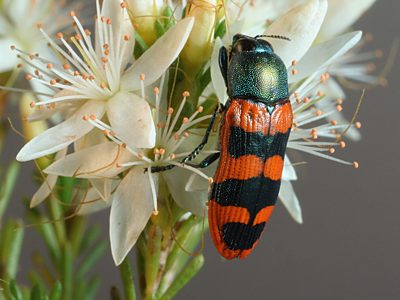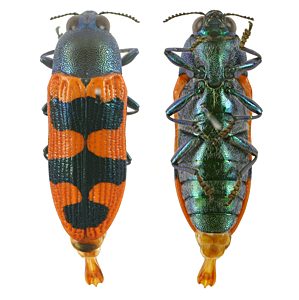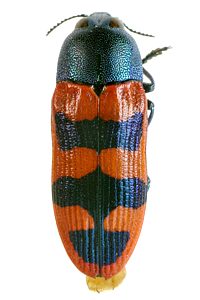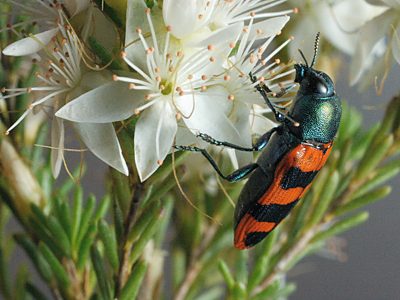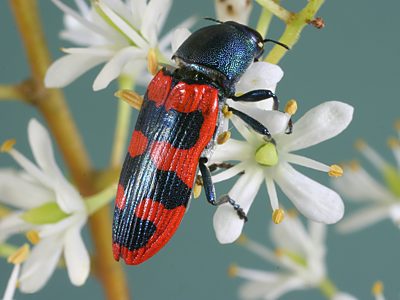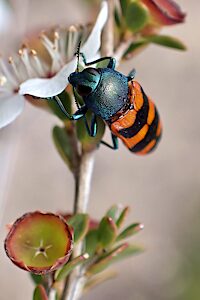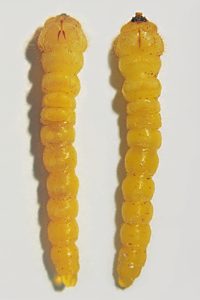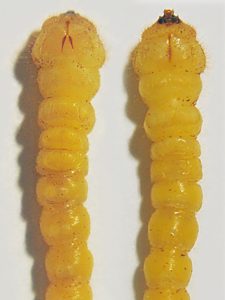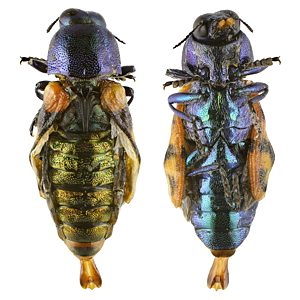A very common and widespread species occurring from south-west WA through to Qld. It is notably absent from Kangaroo Island, despite apparently suitable habitat there. This is a late spring to early summer species that is often found together with C. media. The emergence of these two Buprestids coincides with the peak flowering of Sweet Bursaria Bursaria spinosa, a principal adult host plant for them both.
| Legend | |
| number of active beetles, actually recorded in that quarter-month |
| estimate of active beetles, inferred* from adjoining date ranges |
| actual count > 10 (median) |
| actual count <= 10 (median) |
| live non-emerged (inactive) beetles only |
| | *Inferred when a site has counts of active beetles for each of two consecutive
periods (date ranges), one finishing and the other starting in the same
quarter-month.
The count estimate is assigned to that quarter-month and calculated
as the lower of the two total beetle counts, divided by the number of quarter-months
in its date range.
|
| Legend | records | count of breeding adults, pupae and larvae |
| sites | count of major sites (unique 10 km grid cells +/- some distinct approximate localities) |
| adult | live = extracted alive; dead = extracted dead as intact or fragmentary remains; ex billet = reared and emerged from stored sections of host; ex pupa = reared from sampled pupa |
| pupa | extracted pupa; pupa ex larva = reared pupa from larva |
| larva | extracted larva (any stage including prepupa) |
| gall (only) | hatched or unhatched gall identified by form and position rather than contents |
| Plant names in green are hyperlinked to a matching host species page with plant photos. |
Castiarina larvae and prepupae were discovered in the basal stems of prostrate plants of Cranberry Heath Styphelia humifusa by A.M.P. Stolarski at a single site in the SE Region. From one prepupa I reared an adult (illustrated above) which, although it did not fully expand, can be identified with certainty as C. crenata based on the elytral patterning, aedeagus morphology and other features. This is the first breeding record reported for the species. There is not a lot that can be deduced from this one record, but as C. crenata is such a common species, it seem likely that it would use other larval host species also, at least other heath species in the same family, Ericaceae.
| ¹ Legend | regions | SA State Herbarium regions (map)
EA: Eastern, EP: Eyre Peninsula, FR: Flinders Ranges, GT: Gairdner-Torrens, KI: Kangaroo Island, LE: Lake Eyre, MU: Murray, NL: Northern Lofty, NU: Nullarbor, NW: North-Western, SE: South-Eastern, SL: Southern Lofty, YP: Yorke Peninsula |
| size | The ellipse is the correct size when printed, indicative on a desktop screen, and likely to be wrong on a mobile device. |
